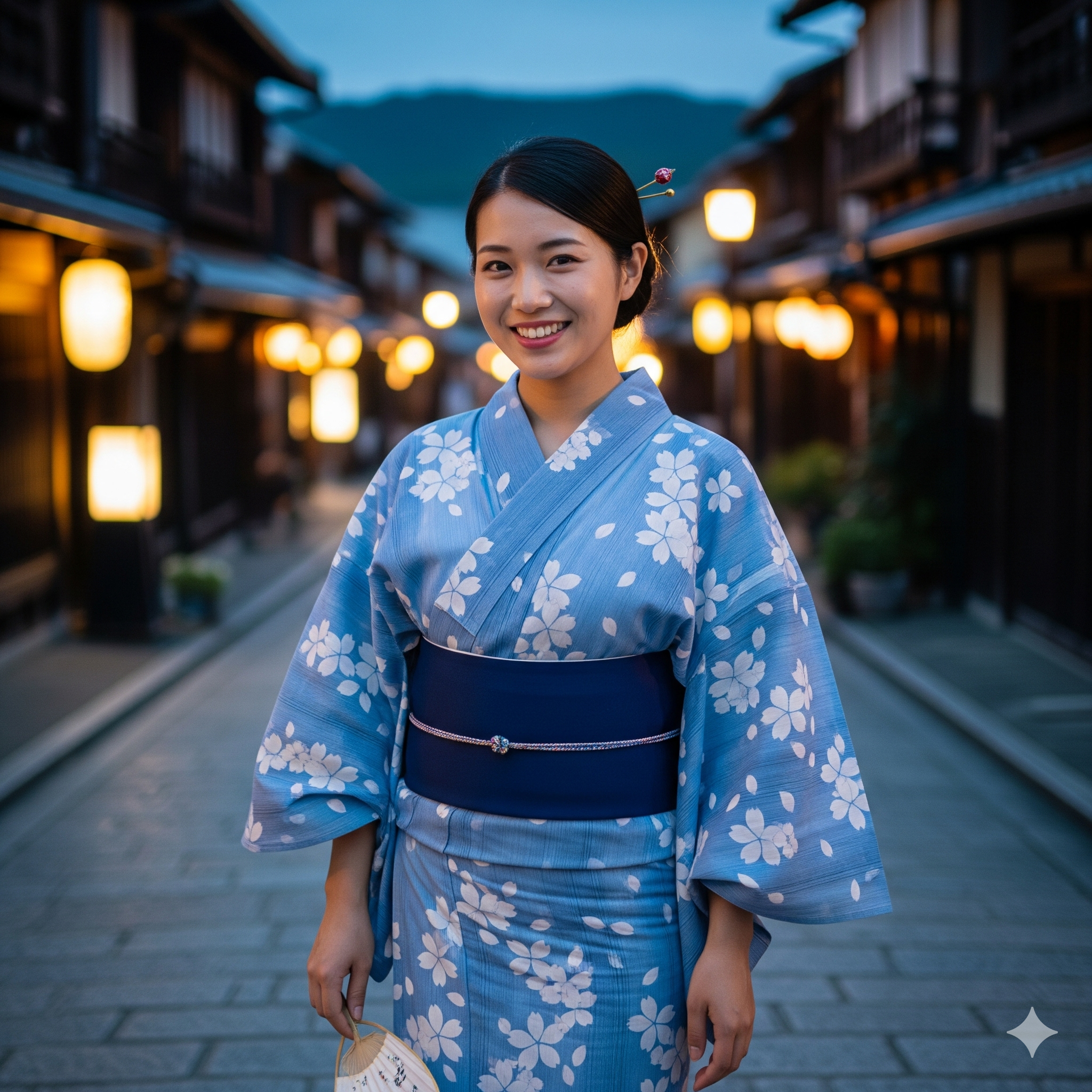Among Japan’s diverse and symbolic attire, the “yukata” stands out with its casual grace and vibrant designs.
A summer staple, this traditional cotton kimono captures the essence of Japanese summer festivals and leisurely hot spring retreats.
Let’s delve into the captivating world of the yukata and understand its charm.
1. Quintessence of Summer
Breathable Beauty:
Unlike the formal kimono, the yukata is made of light, breathable cotton, making it perfect for the humid Japanese summers.
Its very name — “yukata” — means “bathing cloth,” originating from its use as a robe to be worn after taking a bath.
Today, it symbolizes the lightness and joy associated with summer festivities.
2. A Palette of Patterns
Vivid Vibrance:
Yukatas are a canvas of creativity.
From traditional florals and geometric patterns to contemporary designs inspired by anime and modern art, the array of designs cater to all ages and preferences.
These patterns often hold significance, with some denoting wishes for good health, longevity, or prosperity.
3. Accessibility and Affordability
Democratizing Traditional Wear:
While traditional kimonos can be heavy on the pocket and intricate to wear, yukatas offer a more accessible entry into the world of Japanese traditional clothing.
They are more affordable, easier to put on, and require fewer accessories, making them a popular choice for both locals and tourists.
4. An Adornment for All
Unisex Elegance:
The beauty of the yukata lies in its universality.
Men, women, and children — everyone can embrace the elegance of the yukata.
While women’s yukatas often feature bright colors and elaborate patterns, men’s versions lean towards subdued hues and simpler designs, both carrying an undeniable charm.
5. The Festive Flair
Celebration in Cloth:
Yukata is not just clothing but an embodiment of celebration.
During summer festivals, or “matsuri,” streets come alive with people adorned in colorful yukatas, enjoying fireworks, traditional games, and dance.
The attire adds to the festive spirit, creating an ambiance that’s both nostalgic and lively.
6. Versatility in Styling
Accessorize and Shine:
Completing the yukata look involves a range of accessories, from the “obi” (a wide belt) to “geta” (wooden sandals).
These accessories offer wearers the opportunity to personalize their look, mix and match patterns, and truly make the outfit their own.
In Conclusion: Yukata — Japan’s Emblem of Summer Sophistication
More than Just a Garment:
The yukata is a symbol — of Japan’s respect for tradition, its love for nature’s cycles, and its ability to merge the past with the present. Donning a yukata is more than just wearing a piece of clothing; it’s an embrace of a culture, a step into a seasonal celebration, and a nod to the simple joys of life.
To wear a yukata is to become a part of Japan’s vibrant summer tapestry.



コメント